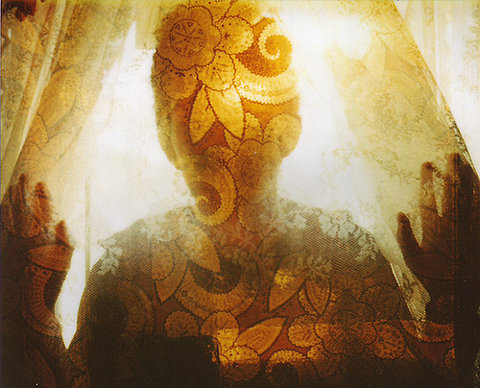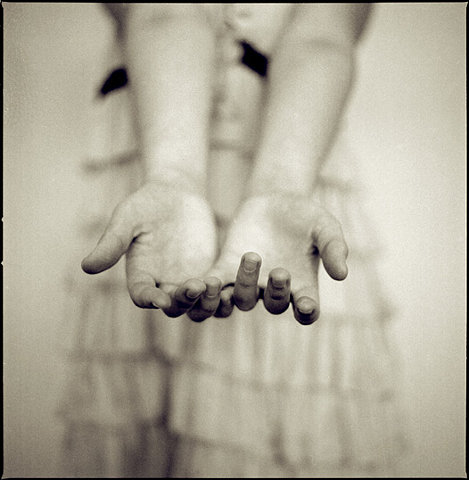You
No one will read this sentence the way you’re reading it, whether you hold it in your heart, or let it drift off the tips of your fingers. The way you turn the page, skipping over certain words, allowing others to reshape the tongue, each instant of your reading creates a unique path of language and experience. While you doubtless share affinities, cultural grooves, and larger gravities that lead you to choose certain clothes or foods, you are entirely singular. And so is everyone else in your apartment building, your city block, the faces that appear only on television. With all these singularities crowding the ice cream stand, how do we all get along? How can we make something like community?
Yoga
When the word Yoga is passed between my friends it is short form for an exercise class where everyone brings their own rubber mat. But the roots of Yoga, at least as described in Patanjali’s Yoga Sutra (written nearly twenty centuries ago), makes no mention of sweat and studios. Instead, “she” (The author is fictional, little is known about her. Imagine perhaps an intersexed body collage with an always shifting facial expression that might include one of your own) asserts that there are eight “limbs” or parts of Yoga. The first limb is dedicated to this question of our uniqueness, and the geometries we create with others. Because we don’t have a planet of our own. Not yet.
First Limb
The first limb of Yoga is ethics. Patanjali likes to call these the yamas. If you want to change as a person, or change up a culture, the yamas are the starting blocks. The essence of psychological change is waking up to a world that doesn’t pivot around self-image. Double ditto for journeys of the spirit. By definition, spirituality means waking up to something greater than the stories we tell about ourselves.
But wait, wait. Can’t I simply do whatever I want all the time and call that a practice? Welcome to my chocolate cake Yoga. And why not a Yoga of sleeping in, a Yoga for mall walkers and shopaholics, cocktail Yoga, distraction Yoga, and let’s top it all off with nightcap Yoga. The anthology of distractions I like to name as myself, aren’t they enough?
I look into the bathroom mirror and kiss the God that is myself, clean its teeth and wash its hair, and above all, listen as every fractured fairy tale begins with the letter I. It’s my beautiful problem. My impossible life. The yamas suggest that the very best way to look after yourself is to look after others. Sentence after sentence, face after face. This means that knocking out a perfect downward dog for the cover of Yoga Journal isn’t the top of the mountain after all. Yoga extends off the mat with the yamas, and is practiced every time we are in a room with someone else. Consider these ethics as a first step. They are not rules, but suggestions about how a wise person might live. When we’re in community, the yamas are guidelines for how we get along.
1000 Failures
Imagine a pair of walkers approaching each other in a horizon of corn. Oh yes, corn is king, the piece of paper you’re holding in your hands, your sugary thoughts, your worst intentions: it’s all corn-fed. Two people in a corn field walk just after sun-up at the same deliberate pace. They’re not walking to get somewhere because they’re already where they need to be. The shorter one with the forever smile breaks stride as they draw closer, catching the light pouring off the face of her student. She asks him, “How are the yamas going?” There is a pause. Not a decisive moment, but an indecisive moment. It’s clear from the looks on these too-good-to-be-true faces that they have grown tired of decisive moments. Of knowing what’s going to happen before it happens. They have left fortune telling behind. Along with their families, their formulas for success and everything that used to be called home. Both have been called to study the yamas, the field of ethics, and there’s no way to do that without plunging into the mess of relations between people. The teacher can’t help asking the question whenever she sees the light enter and exit the face of her fine student, perhaps half her age, give or take, with all that hope shining in eyes that seem to cover most of his body. And on his side he’s waiting, he’s thinking back about what he’s going to tell her. How are the yamas going? At last he replies, “A thousand failures.” The teacher answers, “Good.”
Self Blame
Apocalyptic-folk singer Clara Engel adjusts her capo and howls out the opening two lines of her My Space sensation Lick My Fins, then stops cold. Wrong key. She might start up a queen size tantrum or whistle out a self pitying sob, but instead, without any worry at all, she calmly readjusts the capo, taps a couple of strings, then starts in again. In her farewell to Toronto show she offers us the mistake, the misstep, and then its correction, all in one easy gesture. When the student tells his teacher that there are “a million failures” around the yamas, isn’t he saying, “Hey, we’re trying, aren’t we trying?” And like Clara, trying is the whole deal, it is the practice, the next step after step. It means that the student, like Clara herself, is holding the yamas close. And that’s all the teacher hopes for because failures in ethics are inevitable, aren’t they? At least until Apple designs programs which will extract perfect, real-time behaviours from their slow-moving meat interfaces.
One of the key notes of practice is being able to notice the failure when it happens – the hasty statement, the awkward parting gesture – without coming down hard on oneself. Let’s put a quota on self-blame, OK? No need for it to fill up every shelf in the hardware store, every window on every block of the neighbourhood.
Sheriff
The hardest place to bear witness is when we recognize that we’ve acted unskillfully. Oh, is that my sneaker tread you’re wearing on your face? How can we recognize our missteps without judgment? Because that’s the difference between being non-aggression and conceiving of non-aggression as something to do. That’s when non-aggression becomes the new Olympic sport. Picture East European coaches and pharmaceuticals that make your non-aggressions so large you can hardly walk. That’s when the self with the silver star on its chest comes through the saloon doors and announces, “You are the king of disappointment and heartbreak and we’re sick of it. There’s a graveyard of hope outside and every one of the headstones has an arrow on it pointing in your direction.” This is how the practice of non-violence turns violent. When the sheriff gets called in. Can you do your practice without calling in the sheriff, the marshall, the upholder of the law? It can be tough to manage because the sheriff is so terribly patient, he’s waiting right outside the saloon doors day and night, he lives for that entrance line, the feeling of the doors opening. What we open to at that moment is our own negativity, we identify with this passing condition, this cloud that is floating by, and the sheriff wants to hold onto that cloud and turn it into something he can draw his guns on. The sheriff is the beginning of self blame and self hatred. Don’t we all like to spend time in prisons of our own making? And they can be so difficult to leave, even though you’ve made the iron doors yourself, even though you’ve got the key in your pocket. In fact, you are the key, and as soon as you realize that you can just walk through the jail doors. How can we let go of the sheriff, and stop killing ourselves every time we notice we’re doing something wrong? This is a key note in the practice of ahimsa or non-violence. It is the way we practice non-violence inside our own body.
My friend Carolynne is a master at leaving the sheriff behind. She can rap out her own shortcomings as if they belonged to someone else. That’s how clean they come out of her mouth. When she talks about them I watch as her entire face goes soft, because when she looks inside and picks up the errant behaviours, she does it with her soft face, her soft hands, like she’s handling something small and fragile and nearly broken. And because she’s so soft about herself, when she looks back up at me I can feel that softness raining down on my face too. Sure, there’s a million failures where the yamas are concerned, but that doesn’t stop my best friend from keeping her face easy, so she can swallow the indiscretion, and keep right on opening.
Marx
Marx, for whom socialism was about not labour but leisure, thought it possible to reorganize our resources so that men and women could be freed as far as possible from the more degrading forms of toil… Marx, in a venerable Judaic tradition, was a strenuously ethical thinker, one who grasped the point that morality is mostly a question of learning how to enjoy yourself; men and women, he thought, were at their best when they were able to realize their unique powers and capacities as delightful ends in and of themselves. If everyone were free to do this, however, they would have to find some way of doing it reciprocally. They would need to fulfill themselves in and through the fulfillment of others. Communism for Marx was a kind of political love. The Revolutionary by Terry Eagleton, book review of Karl Marx: A Nineteenth-Century Life by Jonathan Sperber, Harper’s Magazine, April 2013





